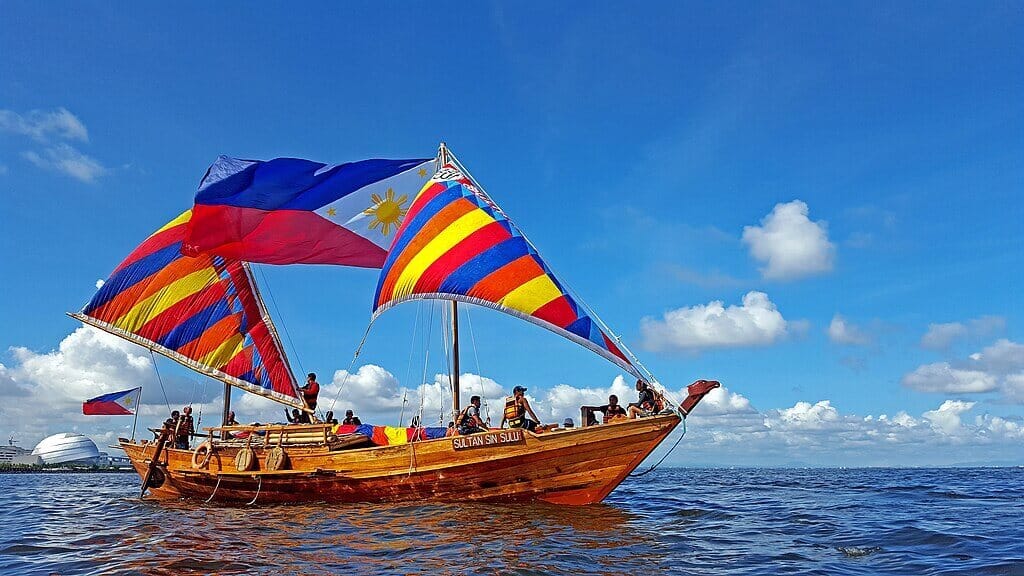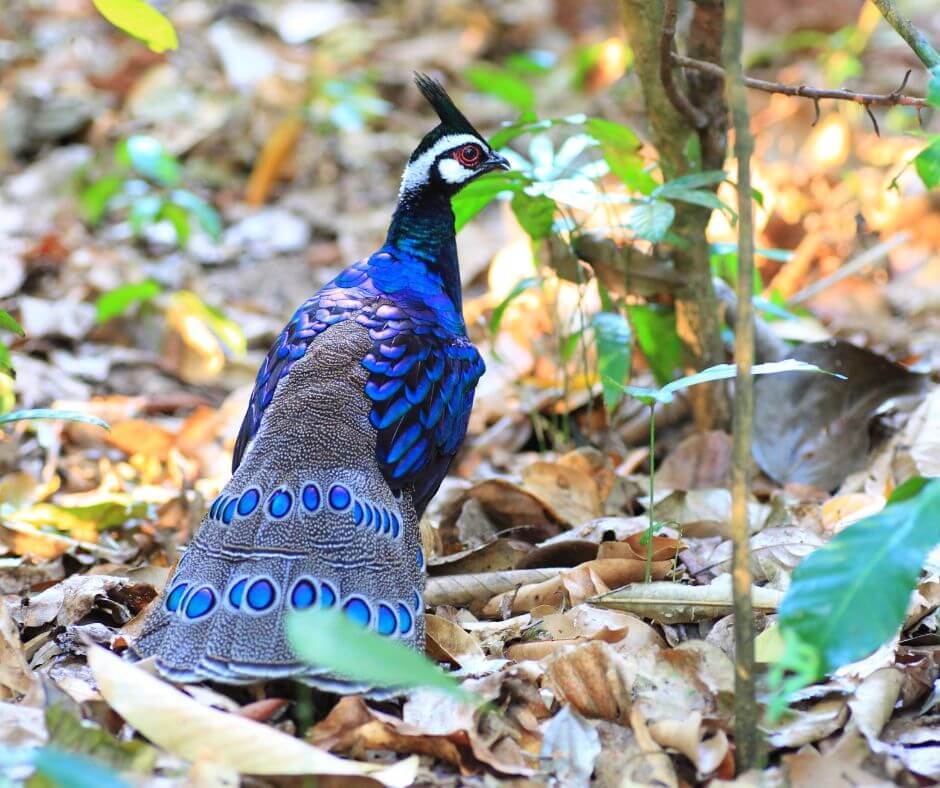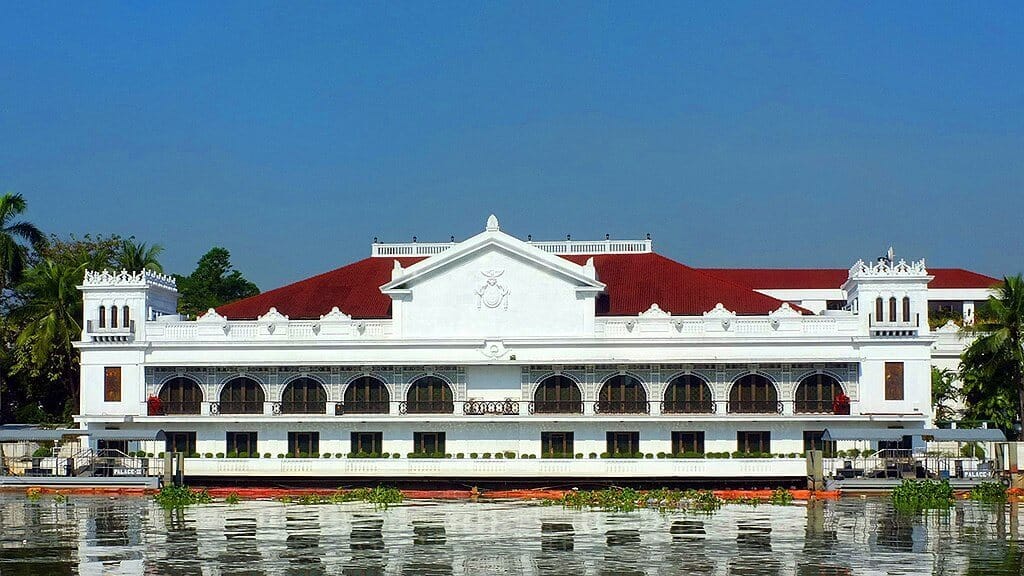- Finding Utopia Newsletter
- Posts
- Bangka – The Iconic Philippine Outrigger Boat
Bangka – The Iconic Philippine Outrigger Boat
Stories: Bangka the Iconic Philippine Outrigger Boat - Palawan Peacock-Pheasant, The Jewel of Palawan’s Rainforests - Malacañang Palace, The Philippine Executive Mansion of Myth and Monument

Hello Everyone,
Welcome to Finding Utopia, your go-to newsletter for discovering how to travel the Philippines and beyond!
Here is what we have for you today.
Bangka – The Iconic Philippine Outrigger Boat
Palawan Peacock-Pheasant – The Jewel of Palawan’s Rainforests
Malacañang Palace – The Philippine Executive Mansion of Myth and Monument
Bangka – The Iconic Philippine Outrigger Boat

From tranquil seaside villages to bustling island ports, the bangka—also spelled banca or paraw—is an enduring symbol of Filipino maritime heritage. Our latest blog post, Bangka: The Outrigger Boat of the Philippines, pays tribute to this remarkable vessel, exploring its history, artistry, and continuing role in daily life.
What Makes the Bangka Special
Ingenious Stability: Characterized by one or two bamboo outriggers called katig, the bangka’s slender hull, often motorized, gains remarkable balance—perfect for navigating reefs or open seas.
Built from Nature: Traditionally crafted from local hardwoods like dungon and lawaan, with lashings of abaca fiber, the bangka is a testament to sustainable, weathered craftsmanship.
Types & Regional Variations
Paraw: Bangka equipped with sails—common in Palawan and Visayas—known for speed and elegance, especially during regattas.
Pump Boats: Motorized versions favored in fishing villages and island-hopping tours—reliable workhorses of coastal communities.
Smaller Canoes: Variants like bangka anak-anak serve generations of boaters and children learning the water ways.
Cultural Roots & Identity
The word “bangka” originates from Austronesian languages, echoing deep cultural links across Southeast Asia. It even inspired the term “barangay”—the Philippine term for its smallest political unit, harking back to ancestral balangay vessels.
In mythology and ritual, bangka feature prominently: from Visayan divination rites involving still boats to stories of sea gods and ancestral voyages.
Evolution & Adaptation
Modern materials: Some bangkas are built with fiberglass or fitted with engine parts—reliable and more resistant to marine damage.
Floating Culture: These boats enable fishers, vendors, ferry services, and tourists alike vital to everyday coastal economics and mobility.
Why the Bangka Matters Today
Essential Infrastructure: It connects remote islands, supplies coastal communities, and delivers tourists to hidden shores.
Cultural Icon: Its presence in festivals, stories, and film cements its status as a living emblem of seafaring tradition.
Ecological Harmony: Wooden, low-impact construction and local materials highlight sustainable design in practice.
How You Can Learn More
Ride It: Experience island life on a bangka tour—feel the wind, paddle, or motor through crystal waters.
Visit Craft Villages: Meet craftspeople who still build and maintain traditional bangka.
Support Preservation: Promoting sustainable fishing, boat-building, and coastal conservation helps keep this legacy afloat.
Your next Philippine adventure isn't just about stunning destinations—it can also be about how you arrive. The humble bangka offers a journey rich in culture, ingenuity, and maritime soul. Celebrate this enduring icon with us today.
Explore the full story here:
Palawan Peacock-Pheasant – The Jewel of Palawan’s Rainforests

Deep within the lush rainforests of Palawan lives an avian treasure: the Palawan peacock‑pheasant (Polyplectron napoleonis), locally known as “tandikan.” Our latest blog, Palawan Peacock Pheasant, reveals the enchanting story of this elusive, iridescent bird—its biology, cultural significance, and the conservation efforts sustaining its fragile existence.
A Spectacular Sight in the Forest Understory
Living up to 50 cm long, the male is a breathtaking masterpiece of nature. Its metallic blue-green plumage, ornate crest, and distinctive tail “eyes” (ocelli) decorate dense undergrowth with flashes of color. Females are more subdued in earth tones, yet share the same elegant crest and tail pattern. Both parents help rear chicks, reinforcing the species' monogamous bond.
Habitat & Survival
This bird is restricted to Palawan Island’s humid lowland and foothill forests—an ecosystem recognized among the richest in biodiversity globally. It lives in coastal to montane zones below 1,000 m. The peacock‑pheasant’s presence is an indicator of healthy forest ecosystems, as it relies on intact, densely vegetated habitats.
Vulnerable – What Threatens It?
Habitat Loss: Agricultural expansion, logging, and mining have fragmented much of Palawan’s forests.
Hunting & Illegal Trade: Despite legal protections, some individuals are still captured for meat or the illegal pet trade.
Population Decline: The IUCN considers the species Vulnerable, estimating between 20,000–50,000 mature birds, with a decreasing population trend. Habitat fragmentation worsens their isolation.
The whole island functions under biosphere reserve status, but real-life enforcement remains a challenge.
Conservation in Action
Protected Areas: Populations exist within the Puerto Princesa Subterranean River National Park and protected forest reserves like Mount Mantalingahan.
Breeding Programs: Encouraging success has emerged from local conservation units working with wildlife centers.
Community Involvement: Initiatives by NGOs, local academics, and indigenous groups promote monitoring, captive breeding, and law enforcement.
Culture in Feathers
Tandikan is ingrained in the cultural identity of Palawan. Its image is depicted on Puerto Princesa’s seal and even on the Philippine ₱100 bill. In indigenous folklore, it stands as a sacred and revered symbol, reinforcing its status as a cultural and biological flagship.
How You Can Support This Forest Icon
Support local conservation NGOs: Fund habitat protection and monitoring efforts
Visit with care: Choose certified eco-tours to promote responsible tourism
Raise awareness: Share its story & importance through social media
Back protected reserves: Support policy efforts to expand Palawan’s sanctuaries
Why the Palmer Peacock-Pheasant Matters
The tandikan is more than a rare bird—it stands at the crossroads of ecology, culture, and conservation. Protecting it safeguards a cascade of other endemic species and helps sustain Palawan’s vibrant forests. It embodies resilience, cultural pride, and the urgent need to preserve our natural heritage.
Explore its full story—and learn how forest guardianship is woven into the future of Palawan’s wild places—here:
Read More:
Malacañang Palace – The Philippine Executive Mansion of Myth and Monument

Perched along the northern bank of the Pasig River in Manila’s San Miguel district, Malacañang Palace has served as the official residence and workplace of Philippine presidents since the Spanish colonial era. Our latest blog, Malacañang Palace, offers an immersive exploration of its layered history, architectural evolution, and contemporary significance.
From Spanish Summer House to Presidential Seat
Built around 1750 by Spanish merchant Don Luis Rocha as a stately summer estate, the palace was acquired by the Spanish government in 1825. After the 1863 earthquake demolished the Governor‑General’s residence in Intramuros, Malacañang became the official seat of power. It then continued as the American Governor‑General’s residence from 1898 onward.
Architecture & Transformation
Colonial Foundations: The original structure was a bahay na bato featuring capiz-windowed walls, wooden interiors, and stone foundations overlooking the river.
Early American Upgrades: Governors-General added reinforced balconies, flood defenses, and azoteas (rooftop terraces) for social engagement.
Marcos-Era Renovation: In 1978–1979, First Lady Imelda Marcos led major refurbishments including expanded facades, reinforced structure, and modern interiors juxtaposed against colonial aesthetics.
Sprawling Complex: Today’s palace is a vast compound blending the main palace, Kalayaan Hall (old executive building), Mabini Hall, Bonifacio Hall, and the New Executive Building, hosted gardens, museums, and ceremonial spaces.
A Living Tapestry of History & Politics
Through centuries of turmoil—from colonial revolutions to People Power uprisings—the palace remained central to Philippine politics. It survived WWII bombings, hosted controversial leaders like Marcos, and was stormed during the 1986 and 2001 revolutions.
Its museum—located in Kalayaan Hall, houses diplomatic gifts, artwork, and memorabilia reflecting the evolving presidency from Aguinaldo to Marcos Jr.
Pastoral Gardens & Public Spaces
Set within extensive grounds, Malacañang offers peaceful respite from Manila’s bustle. It features century-old acacia and balete trees, ornamental fountains, and the Freedom Park—known for its sculptures symbolizing democratic freedoms.
Visiting Malacañang: Guide & Tips
How to Tour: Arrangements through the Presidential Museum & Library or guided heritage tours (e.g., San Miguel district walks) are required—public access is limited but available on weekdays.
Best Times: Morning visits avoid crowds and heat; late afternoons are ideal for photography across Pasig.
What to Bring: Expect light walking, dress modestly, and bring an ID for security clearance.
Nearby Attractions: Add stops at San Miguel Church, the National Museum complex, and the Luneta Hotel to round out the historical tour.
Why Malacañang Matters
Malacañang Palace is more than a building—it encapsulates the Philippines’ layered political journey, reflecting shifts in colonial rule, independent governance, and democratic transitions. From the architectural grandeur to the museum’s artifacts, every corridor echoes stories of power. A visit here is a passage through national memory and identity.
Explore the full story and plan your visit




Reply